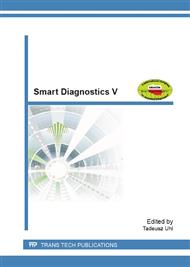p.214
p.223
p.232
p.243
p.249
p.257
p.266
p.276
p.281
Remote Monitoring of Fatigue Cracks Growth in the Aircraft Structure Based on Active Piezosensor Network during the Full Scale Fatigue Test
Abstract:
One of the major issues from a structural integrity point of view of the aircraft structure is an appropriate health monitoring technology delivery for the damage tolerant philosophy. This paper presents a development of a system for fatigue crack growth monitoring and early damage detection in the PZL 130 ORLIK TC II turbo-prop military trainer aft structure. The maintenance system of the aircraft shifts from the safe-life to the hard-time. The aircraft started Full Scale Fatigue Test (FSFT) which will continue up to 2013. In the article a built block approach for the system design, signal modeling, sensing and signal processing as well as damage detection is presented. Taking into the consideration a previous experience of AGH as well as AFIT, a network of PZT transducers was deployed in the aircraft structure hot-spots. The system components are: remote monitoring unit, signal analysis, graphical user interface, sensor self-diagnostic tools, and data classification model. Description of damage detection capabilities are delivered in the paper. In particular some issues concerning the proposed damage indices and its application to crack growth estimation models are discussed. Fishers Linear Discriminant is used as a method to obtain effective crack growth predictors and one of the self-diagnostic tools used in the system. The results of the data collected from specimen fatigue tests are delivered and cross-validation technique is used to evaluate a classification model based on the damage indices derived.
Info:
Periodical:
Pages:
249-256
Citation:
Online since:
October 2013
Price:
Сopyright:
© 2014 Trans Tech Publications Ltd. All Rights Reserved
Share:
Citation:


